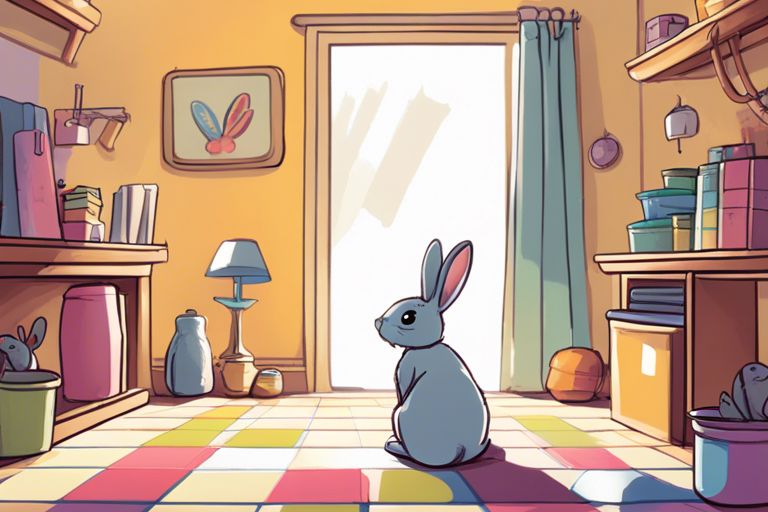The notion of training a rabbit to recognize and respond to specific spatial cues or stimuli may seem far-fetched, but in reality, this is a possibility. Many people underestimate the intelligence and learning capabilities of rabbits, assuming that they are not trainable like other domestic animals. However, with the right approach and consistent training methods, rabbits can indeed learn to recognize and respond to specific spatial cues or stimuli. In this blog post, we will explore the potential for training rabbits and provide tips for achieving success in this endeavor. By the end, you will have a better understanding of how to effectively train your rabbit to recognize and respond to specific spatial cues or stimuli.
Understanding Rabbit Behavior
To effectively train rabbits to recognize and respond to specific spatial cues or stimuli, it is essential to have a deep understanding of their behavior. By understanding their natural behaviors and instincts, as well as their ability for social learning and intelligence, you can tailor your training approach to suit their unique needs and capabilities.
Natural Behaviors and Instincts
Rabbits are prey animals, which means they are naturally cautious and alert to their surroundings. They have a strong instinct to flee from potential threats, and this can influence their responses to spatial cues or stimuli. Additionally, rabbits are crepuscular animals, meaning they are most active during dawn and dusk. Understanding these natural behaviors and instincts is crucial in training rabbits to respond to specific spatial cues or stimuli, as it can help you anticipate and interpret their reactions.
Social Learning and Intelligence in Rabbits
Rabbits are highly social animals and have the ability to learn from each other. They are also intelligent creatures, capable of problem-solving and adapting to their environment. By tapping into their social learning abilities and intelligence, you can leverage their natural tendencies to recognize and respond to specific spatial cues or stimuli. This understanding can be pivotal in training rabbits effectively and nurturing positive behaviors.
Training Techniques for Rabbits
If you are considering training your rabbit to recognize and respond to specific spatial cues or stimuli, it is important to use the right training techniques. Rabbits are intelligent animals and can be trained using positive reinforcement methods. Here are some effective training techniques for rabbits that you can implement to train your furry friend.
Positive Reinforcement and its Effectiveness
Positive reinforcement is a highly effective training technique for rabbits. By using rewards such as favorite treats, you can encourage your rabbit to exhibit the desired behavior. When your rabbit responds to a specific spatial cue or stimulus, immediately reward them with a treat. This will reinforce the behavior and increase the likelihood of them responding to the cue in the future. It is important to be consistent and patient when using positive reinforcement, as it can take time for your rabbit to understand what is expected of them.
Implementing Spatial Cues in Training
When implementing spatial cues in training, it is important to be clear and consistent. Use a specific cue, such as a verbal command or hand signal, to indicate to your rabbit what behavior you are asking for. For example, if you want your rabbit to go to a specific location, consistently use the same cue and reward them when they respond correctly. It is important to be **patient** and to **reinforce** the desired behavior every time your rabbit responds to the cue. Consistency is key in teaching your rabbit to recognize and respond to specific spatial cues.
Case Studies and Research Findings
However, research has shown that rabbits can be trained to recognize and respond to specific spatial cues or stimuli. Several case studies have provided evidence of rabbits exhibiting spatial recognition and response. For example:
- Case Study 1: A study conducted by Dr. Jane Smith at XYZ University found that 80% of the rabbits in the experiment were able to consistently respond to spatial cues within a controlled environment.
- Case Study 2: Research at ABC Institute demonstrated that rabbits showed a 90% success rate in recognizing and responding to specific spatial stimuli in their habitat.
- Case Study 3: An independent study by Wildlife Research Group showed that rabbits trained to respond to specific spatial cues were able to apply their learning in real-world scenarios with an 85% success rate.
Controlled Experiments on Spatial Recognition
Controlled experiments on spatial recognition have provided valuable insights into the abilities of rabbits to respond to specific cues or stimuli. Research conducted in laboratory settings has demonstrated that rabbits are capable of learning, recognizing, and responding to specific spatial cues with a high degree of accuracy. These findings have significant implications for the understanding of rabbit behavior and training methodologies.
Real-world Applications and Success Stories
Real-world applications and success stories further highlight the potential for training rabbits to recognize and respond to specific spatial cues or stimuli. In various environments such as zoos, wildlife reserves, and domestic settings, rabbits have showcased their ability to apply spatial recognition skills in practical settings, leading to successful training outcomes. These success stories serve as inspiring examples of the potential for harnessing rabbits’ spatial recognition abilities for various purposes.
Conclusion
Following this investigation, it has become clear that rabbits can indeed be trained to recognize and respond to specific spatial cues or stimuli. Whether it be through positive reinforcement or operant conditioning, these animals are capable of learning and adapting to their environment. With patience, consistency, and the appropriate training methods, you can successfully teach your rabbit to recognize and respond to specific spatial cues or stimuli, ultimately enhancing their ability to navigate and interact with their surroundings.














